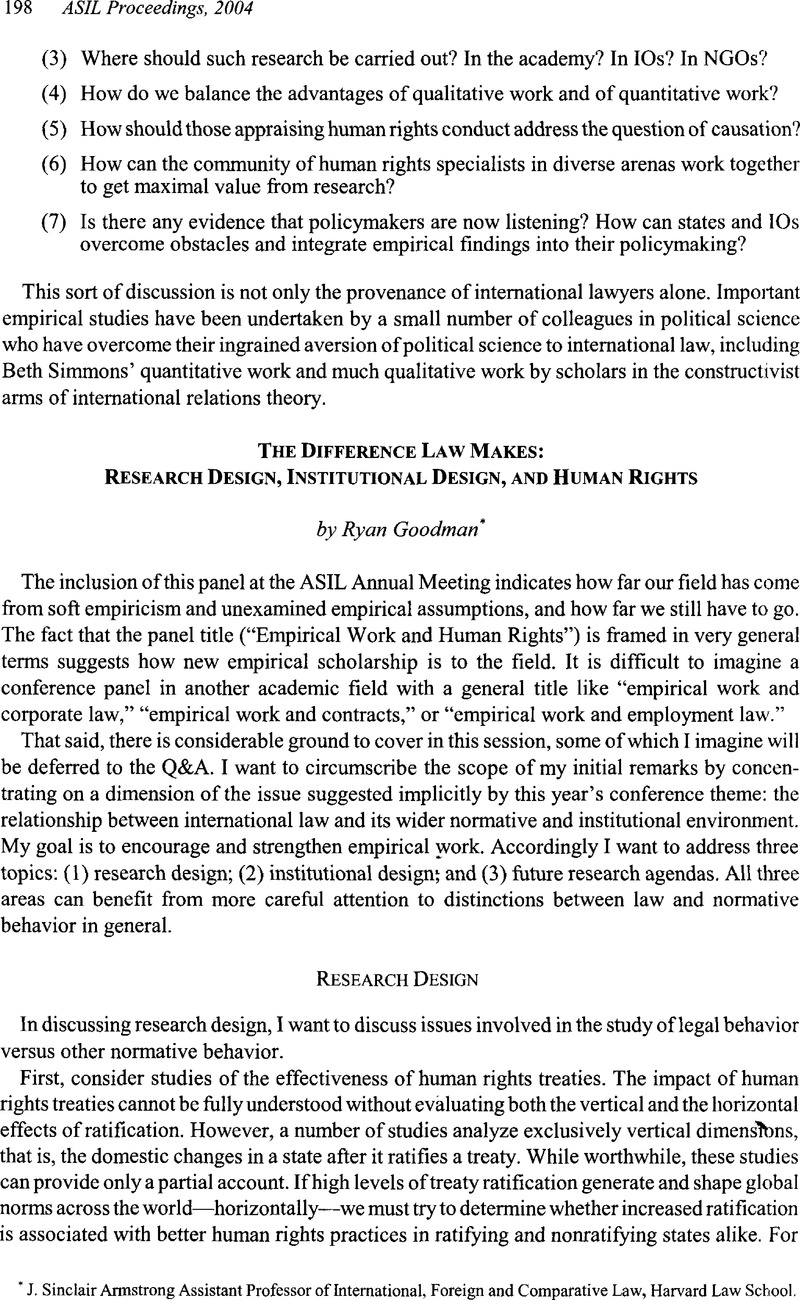No CrossRef data available.
Article contents
The Difference Law Makes: Research Design, Institutional Design, and Human Rights
Published online by Cambridge University Press: 28 February 2017
Abstract

- Type
- Empirical Work in Human Rights
- Information
- Copyright
- Copyright © American Society of International Law 2004
References
1 Heyns, Christof & Viljoen, Frans, The Impact of the United Nations Human Rights Treaties on the Domestic Level, 23 Hum. Rts. Q. 483 (2001)CrossRefGoogle Scholar.
2 For a more extensive discussion of this argument, see Goodman, Ryan & Jinks, Derek, Measuring the Effects of Human Rights Treaties, 13 Eur. J. Int’l L. 171 (2003)CrossRefGoogle Scholar.
3 See Epstein, Lee & King, Gary, The Rules of Inference, 69 U. Chi. L. Rev. 1 (2002)CrossRefGoogle Scholar (discussing these types of errors in empirical legal scholarship).
4 See, e.g., Hathaway, Oona A., Do Human Rights Treaties Make a Difference?, 111 Yale L. J. 1935 (2002), at 1968CrossRefGoogle Scholar.
5 Keith, Linda Camp, The United Nations International Covenant on Civil and Political Rights: Does it Make a Difference in Human Rights Behavior?, 36 J. Peace Res. 95, 105 (1999)CrossRefGoogle Scholar.
6 Goodman, Ryan & Jinks, Derek, How to Influence States: Socialization and International Human Rights Law, 54 Duke L. J. (forthcoming 2004)Google Scholar.
7 See, e.g., Hathaway, supra note 1, at 2023-25; and Anne F. Bayefsky, The UN Human Rights Treaty System: Universality At the Crossroads (2001).




